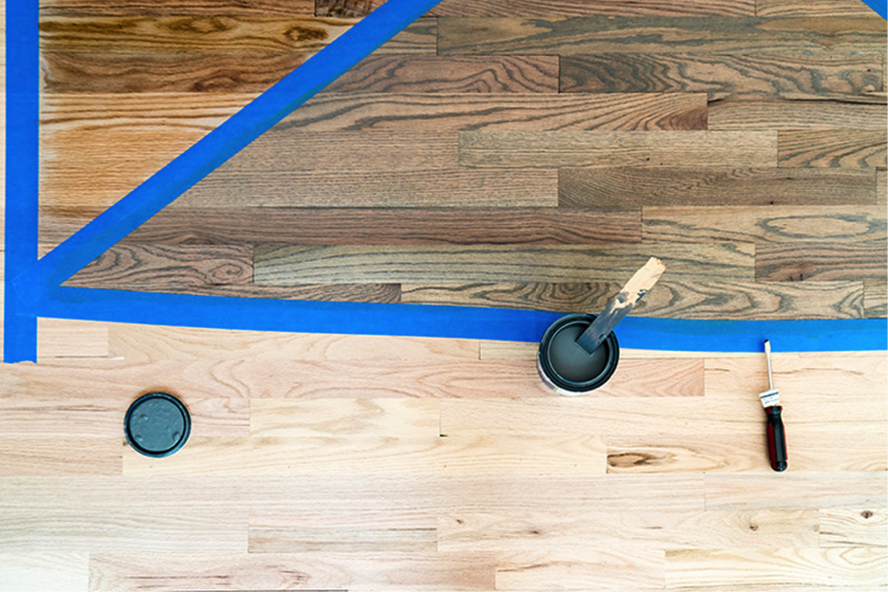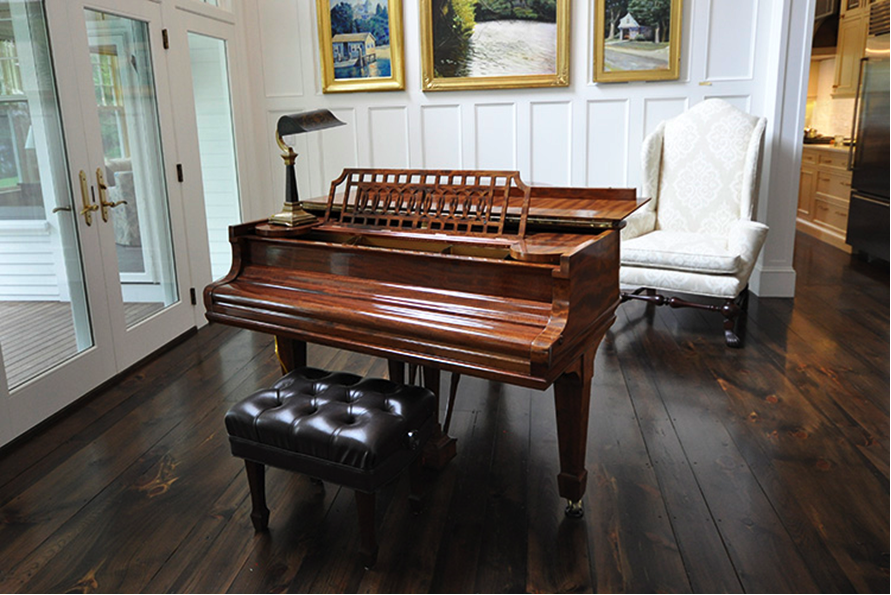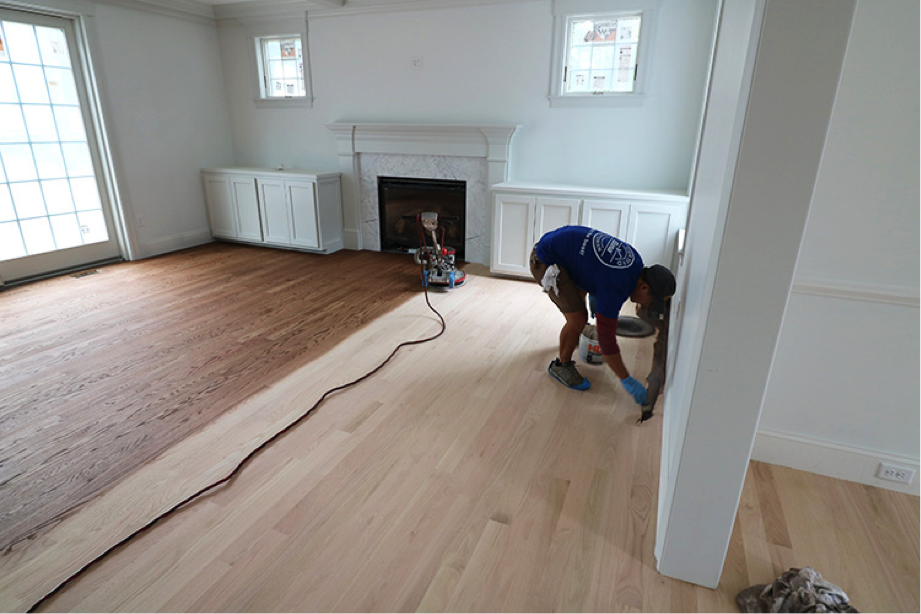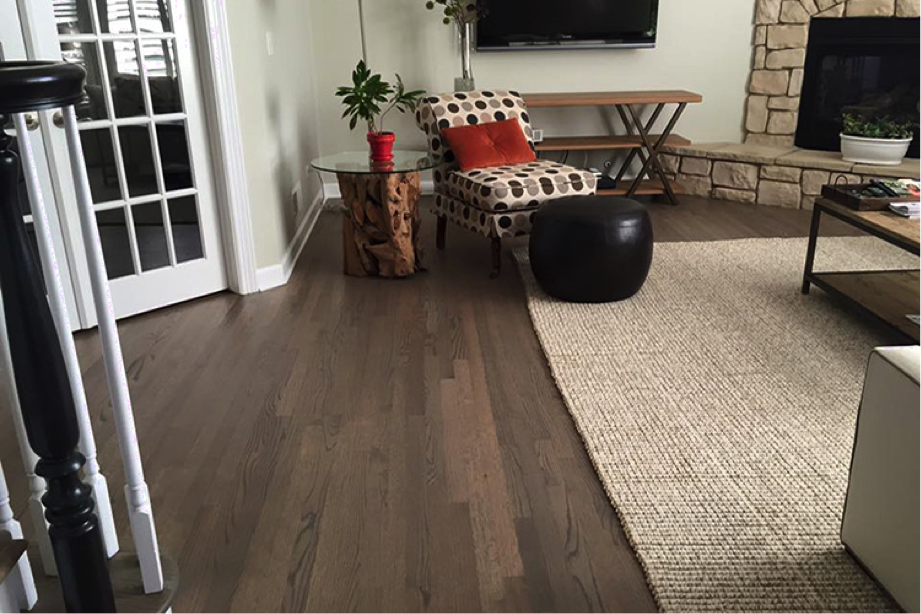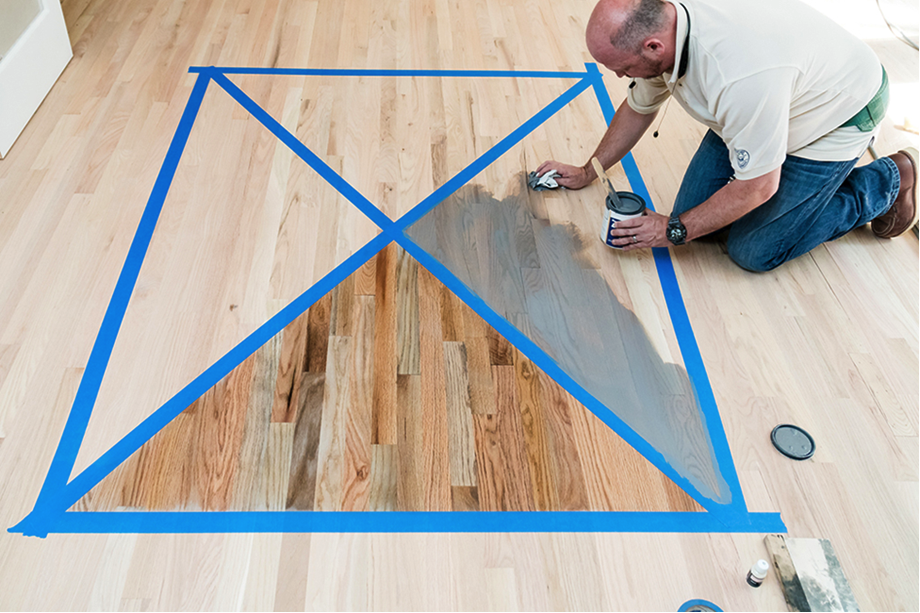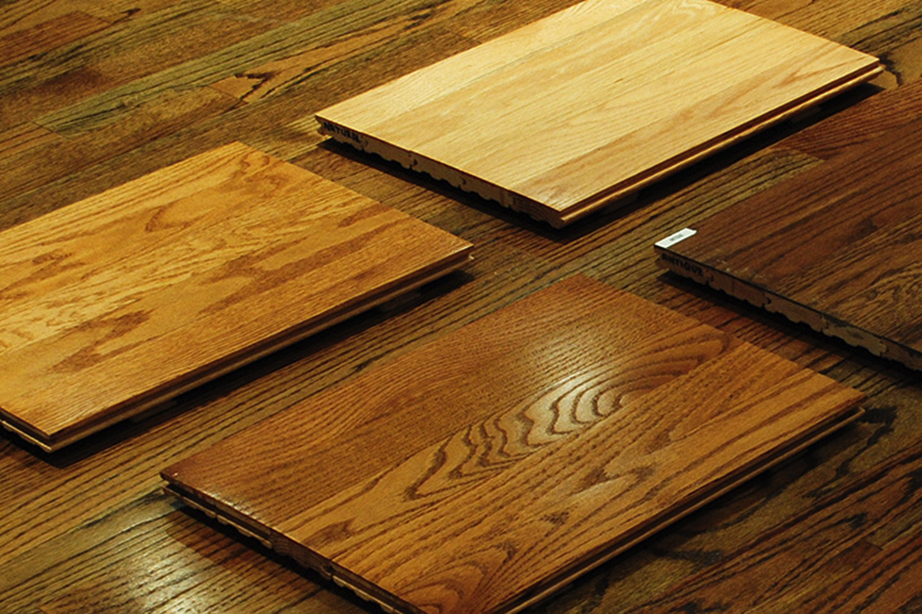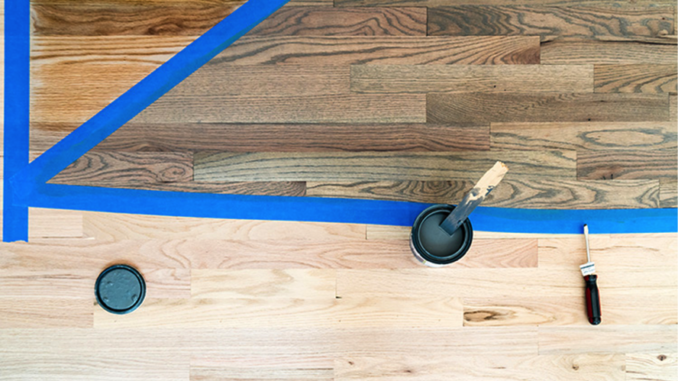
By Glenn Griffin, guest contributor
One of the most commonly asked questions people have when restoring their hardwood floors is: “Should I stain my floor?” That question is closely followed by: “What color stain should I choose?”
Staining your floors is a major decision for three reasons: 1) Your choice will have a substantial impact on the overall look of your home, 2) You will be living with your color choice for a very long time and 3) Once the stain is applied, it’s expensive and time consuming to redo it.
On top of that, there is literally hundreds of colors, shades, and combinations to choose between. Choices, choices, choices!
That’s a lot of pressure.
Thankfully, choosing the perfect color for your wood floors isn’t too difficult. You just need to know the right questions to ask. Below we’ll go through some questions that will get you on the right track of deciding whether you should even stain in the first place, and if so, how to choose the perfect stain color for your home.
STEP 1: Can I and Should I Stain My Floors?
You have a choice of staining your floors or keeping them in their natural state. Some floors are perfect for staining, others not so much. Which way you decide will depend on your answers to the following 2 questions…
What type of wood floors do I have?
If you are fortunate enough to have an exotic or unique wood floor such as mahogany, cherry, walnut, or maple then most likely they shouldn’t be stained.
First, these types of wood already look beautiful in their natural state. Often, when homeowners stain their floors, they are trying to imitate these types of wood floors. Second, many of these exotic floors also don’t take being stained well due to the oils or tight grain in the wood. There’s a high chance you won’t be happy with the result. It’s much better to keep them unstained and enjoy their natural beauty.
On the other hand, you may have a more common type of hardwood floor like red or white oak.
Over time, some finishes — especially oil based finishes — turn oak a yellowish-orange look that often gets associated with your grandparent’s floors from the 1960s. Other newer water based finishes can have a washed-out look if applied to a natural unstained oak floor. If this is not the look you’re going for, or you want to completely transform how they look, then staining is a great option.
Luckily, oak floors are perfect candidates for being stained and take stain application extremely well when the proper techniques are used.
Is there any water or pet damage?
If you have previous damage on your floors due to an overzealous pot plant waterer or the last owner’s bladder-challenged pets, then you have a couple of options: 1) Replace the damaged areas, or 2) Stain the floors a darker color than the damage so it’s not as obvious.
If the water damage covers a large portion of the floor but it’s only surface damage and can be muted with a darker color, then staining is well worth considering. It will save you a lot of money compared to the alternative of replacing the floors.
STEP 2: What Color Should I Choose?
Because there are so many color choices, this step can get a bit overwhelming. There are many different suppliers and they all have different shades and colors. Some manufacturers, especially with hardwax oils, have pre-treatment colors that can be layered on top of stain, or under it, to provide an unlimited color palette. You will want to get some color samples from your flooring professional to see the range you can choose from.
Our suggestion in choosing a color would be to first ask yourself…
What decorating style do you have or want?
Having a specific taste in furniture or an interior design style in mind will be a huge help in deciding on a stain color. Will you be buying new furniture? If so, you will have some more leeway. If you are keeping your existing furniture, then you will need to find a color that works with what you have.
If you love rustic farmhouse style interiors, you wouldn’t stain your floors dark ebony or grey. It would completely clash with your rustic furniture. Mid-toned brown shades would be a better fit.
For a modern, bold sleek contemporary design style, rich red hues would be very out of place. Ebony, white, or one of the various grey shades would be much better suited.
The key is to find a color that highlights and sets the groundwork for the interior decorating style you’re aiming for. Remember, your floors make up a large area of your home and will have a significant impact on the overall design. You want something that not only grounds your room, but also blends your decorating style cohesively together.
Because many of us find it difficult to visualize these images in our heads, a great idea is to grab some home decorating, architecture, and interior design magazines for inspiration. There are lots of online resources for photos too, like Pinterest and Houzz.
Flip through them and find all the photos with your ideal interior design style. What have others, especially professional designers, done in similar situations to what you envision? What catches your eye? What can you see yourself living with long-term? Do you like the light, airy look and feel more drawn to a lighter colored shade? Or do you prefer the deep, bold look of a darker floor? Maybe something in-between?
When you find a color you love, save the photo and show it to your wood floor professional. They’ll be able to help you find out how to replicate it.
What if I can’t decide between 2 or 3 colors?
If you’ve narrowed your choices down to 2 or 3 colors then you’re well on your way to getting the perfect stain for your hardwood floors.
The next step is to have your floor professional provide some larger samples. He’ll be able to offer two choices: either put the stain samples directly on your floor (after sanding a section), or make you some large portable sample panels.
The benefit of putting stain samples directly on your floor is that you can see exactly how the final color will look.
The beauty of sample panels also is you can move them around the house and see what the color looks like in various areas of your home, around your furniture, against the kitchen cabinets, etc. Try to get your floor professional to coat them with the same finish system you will use so that the color isn’t distorted.
With either type of sample, you will be able to observe what they look like during various times of the day and in different lighting conditions.
Once you live with your samples for a few days, you’ll know exactly what color will be perfect for your home.
 ABOUT THE AUTHOR: Glenn Griffin helps service based businesses attract and convert high quality leads with content and marketing. As an expert in hardwood flooring, he writes content for various flooring websites including Tadas Wood Flooring, Advantage Hardwood Refinishing and Delaware Valley Hardwoods You can see their work in the photos above.
ABOUT THE AUTHOR: Glenn Griffin helps service based businesses attract and convert high quality leads with content and marketing. As an expert in hardwood flooring, he writes content for various flooring websites including Tadas Wood Flooring, Advantage Hardwood Refinishing and Delaware Valley Hardwoods You can see their work in the photos above.
